Around the Solar System
 Bashny.Net
Bashny.Net
Now dozens of spacecraft travel through our solar system, and we decided that we would do well to look at the pictures of the great celestial body made by NASA and ESA during their travels far from Mercury, Earth, Moon, Mars, Saturn and several "intermediate stations" . Collected here are photos taken in our solar system on a scale of one inch to millions of kilometers.
September 8, 2010 in the sun erupted class C3. When sunspot turns away from the Earth, the active region erupted, producing a solar flare and a fantastic bulge. The flash also produced coronary mass ejection into space.

Relief on the surface of Mercury, including craters Kipling (bottom left) and Steichen (upper right). The picture was taken on September 29 spacecraft NASA «MESSENGER». (NASA / Johns Hopkins University Applied Physics Laboratory / Carnegie Institution of Washington)
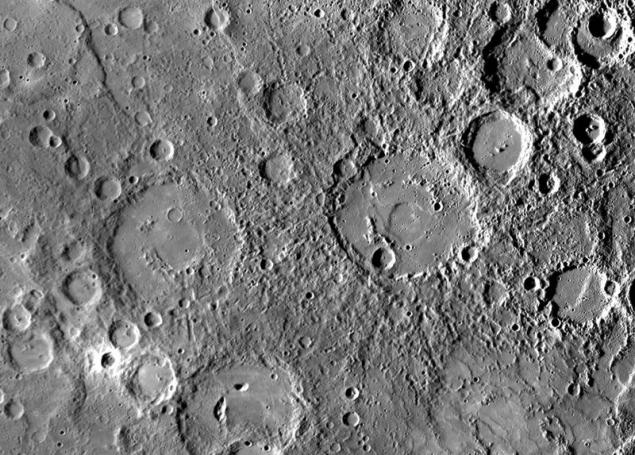
Earth and Moon from afar May 6, 2010 at a distance of 183 million kilometers from the ship «MESSENGER», from which the picture was taken. North bottom of the image. (NASA / Johns Hopkins University Applied Physics Laboratory / Carnegie Institution of Washington)
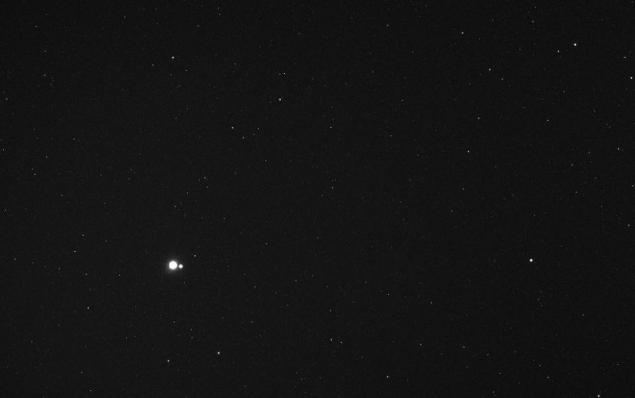
Disappearing crescent and a thin line of Earth's atmosphere. Picture taken by a crew member «Expedition 24" on the International Space Station on Sept. 4. (NASA)

Earth - the view from the Moon on 12 June. This image was created by a team of orbital station «Lunar Reconnaissance Orbiter» of several photos taken on 12 June during the sequence settings. (NASA / GSFC / Arizona State University)
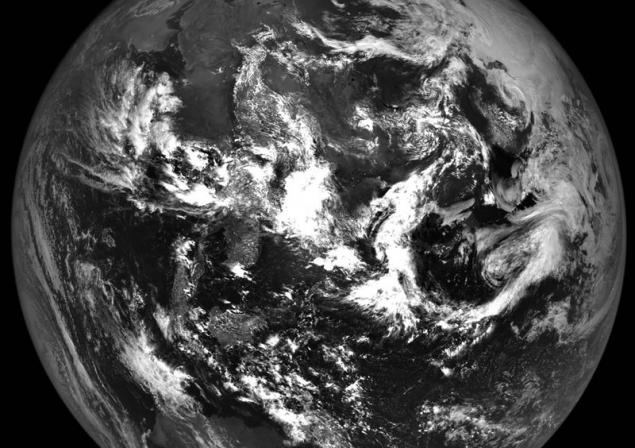
Brightly lit areas of Torino (Italy), Lyon (France) and Marseille (France) stand out from the small towns. Picture taken on April 28. (NASA / JSC)

Aurora australis over the Earth on May 29. (NASA / JSC)
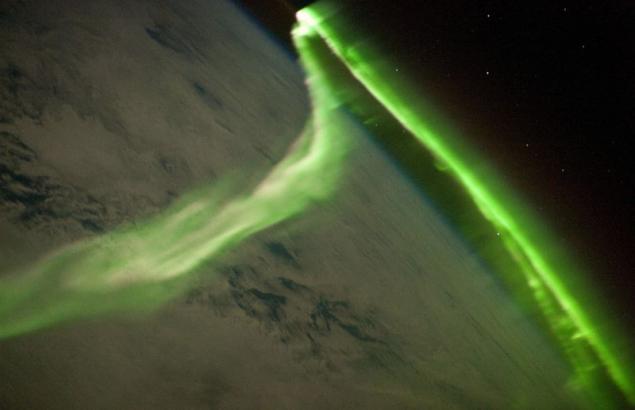
Meteor rushes past stars in the night sky over Stonehenge in England on 12 August. Perseids occur every August when the Earth passes through a stream of space debris left by comet Swift-Tuttle. Picture taken with a long exposure. (REUTERS / Kieran Doherty)
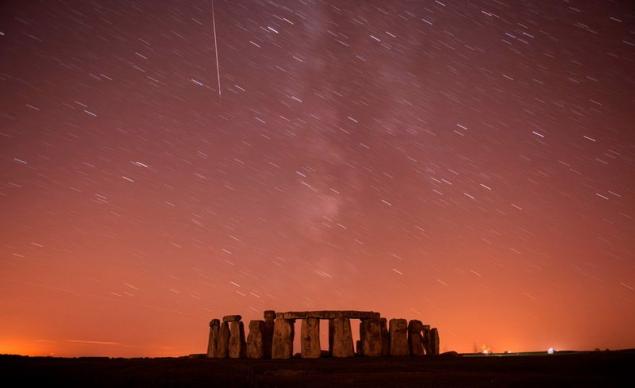
Mertz glacier floats off the coast of East Antarctica along the coast of George V on 10 January. Apparatus ALI satellite EO-1 took this picture of the iceberg in a natural color, separated from the glacier. (NASA Earth Observatory / Jesse Allen / NASA EO-1 team)
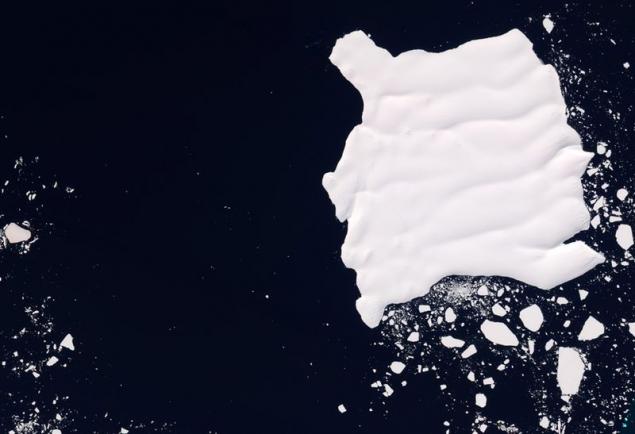
Photo taken by astronaut Douglas H. Wheelock aboard the International Space Station on August 22. "The beauty of Italy a clear summer night in the arms of the Mediterranean Sea. You can see many beautifully illuminated islands and shoreline, including Capri, Sicily and Malta. Along the coast stand out Naples and Mount Vesuvius. " (NASA / Douglas H. Wheelock)

Hurricane Danielle. Taken by astronaut Douglas H. Wheelock aboard the International Space Station on August 28 low orbit. (NASA / Douglas H. Wheelock)

Pit on the Moon. Picture taken on 24 April and reaches about 400 meters wide. (NASA / GSFC / Arizona State University)
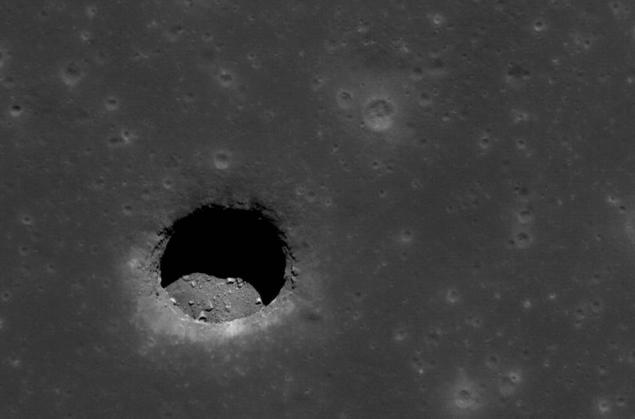
The last rays of the sun illuminate the central peak of the crater on the Moon Bhabha before sunset. Picture taken July 17. (NASA / GSFC / Arizina State University)
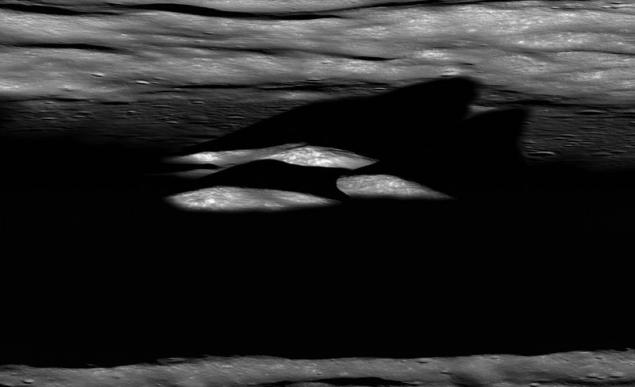
LROC station photographed natural bridge on the moon. How did this bridge? Most likely because of the double collapse in lava tubes. " Picture taken in November 2009. (NASA / GSFC / Arizona State University)
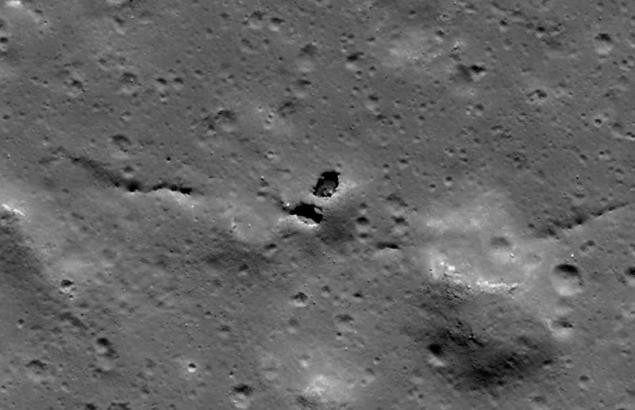
This photo Martian satellite Phobos was made using a high-resolution stereo camera on board the ship «Mars Express» March 7. (ESA)

One dune on the surface of Mars. The photo was taken at 14:11 local time on July 9 Mars. (NASA / JPL / University of Arizona)
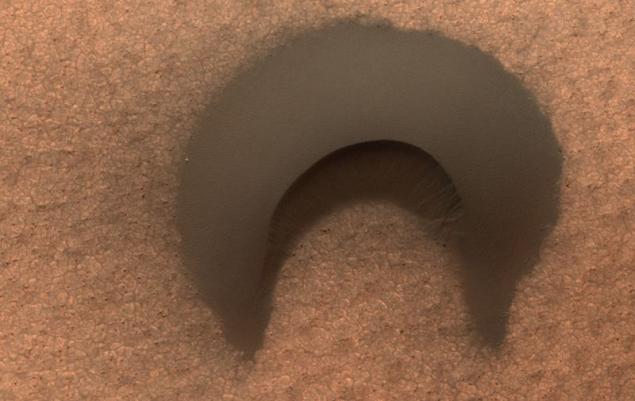
Inflated by the wind on the surface of the relief shield volcano in the region Tharsis on Mars. Picture taken July 31. (NASA / JPL / University of Arizona)
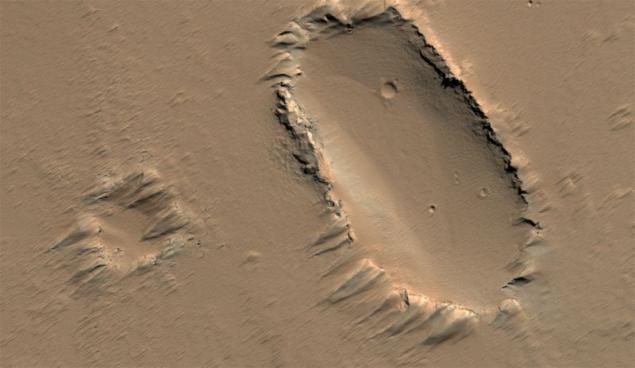
Dunes in the crater of Matara on Mars on 24 July. (NASA / JPL / University of Arizona)
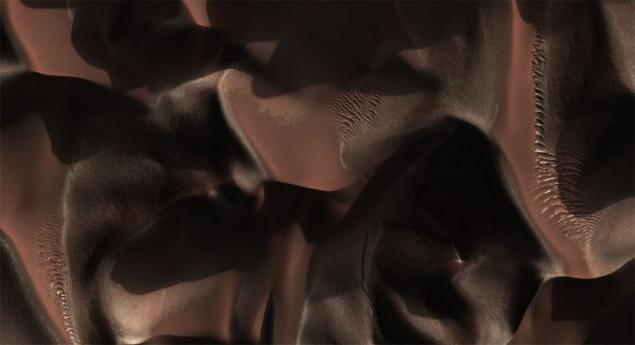
Rover «Opportunity» «looks" on their tracks on the Martian surface on August 4. (NASA / JPL)
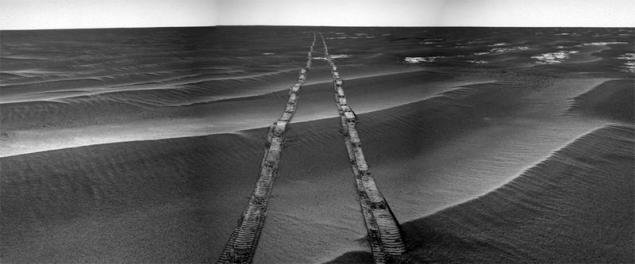
Rover «Opportunity» directed its panoramic camera on the ground, taking the shot himself and his tracks, June 23. (NASA / JPL)

Rover «Opportunity» photographed part of the stone from which he took a sample of the top layer for consideration on 7 January. (NASA / JPL)
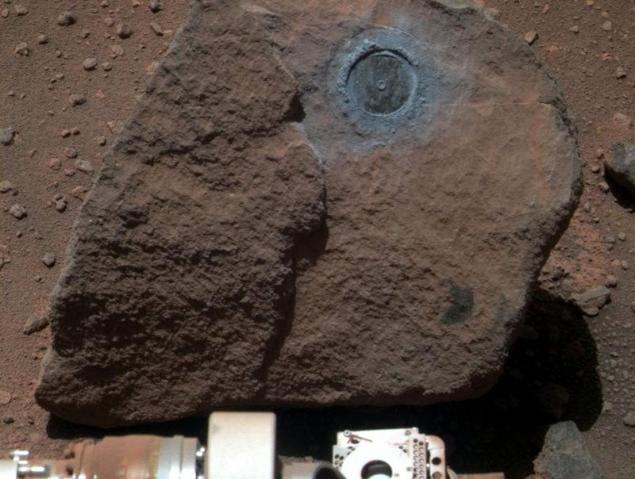
Rover «Opportunity» uses its microscopic camera for a more detailed picture of stone on the surface of Mars on February 17th. (NASA / JPL)
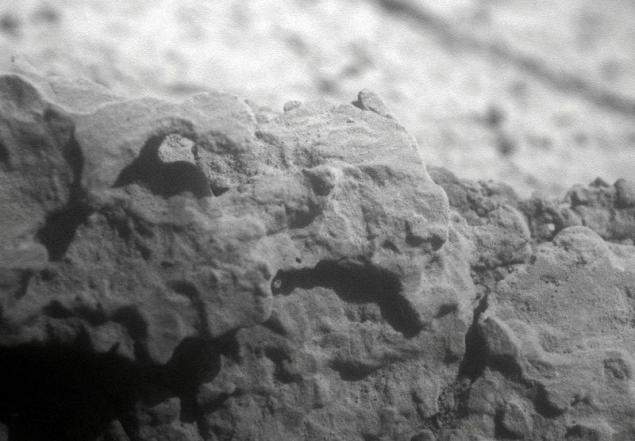
Asteroid Lutetia. Picture taken spacecraft "Rosetta" on July 10. The European Space Agency has been able to get close to the asteroid at a minimum distance during his travels 476 million miles between Mars and Jupiter. "Rosetta" took the first pictures from the largest asteroid, which has ever been a satellite, July 10, 2010, flying at near distance away (3200 km). (AP Photo / ESA)
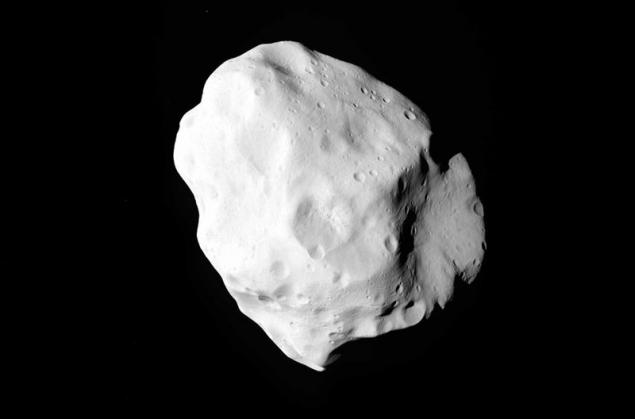
Bright dot on each of these images is a small comet or asteroid burning in the atmosphere. Photo on the left was made on June 3 amateur astronomer Anthony Weasley in Broken Hill, Avtsraliya. He took this picture using the 37-cm telescope. The picture shows color Weasley teams. Meteor is visible on the right. Color image on the right was made by an amateur astronomer Masayuki Tachikawa of Japan on August 20. Meteor can also be seen at the top right. (REUTERS / NASA)
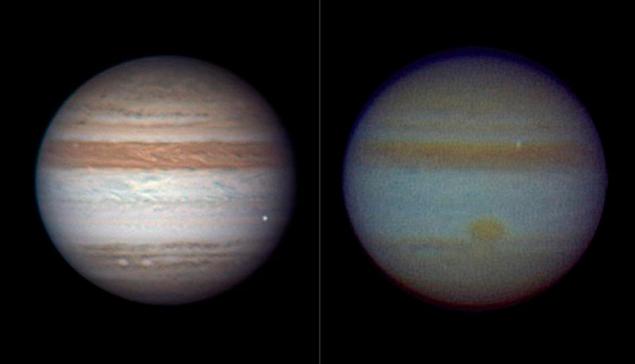
Saturn and its moon Enceladus. Picture taken spacecraft "Cassini" on August 13. (NASA / JPL / Space Science Institute)
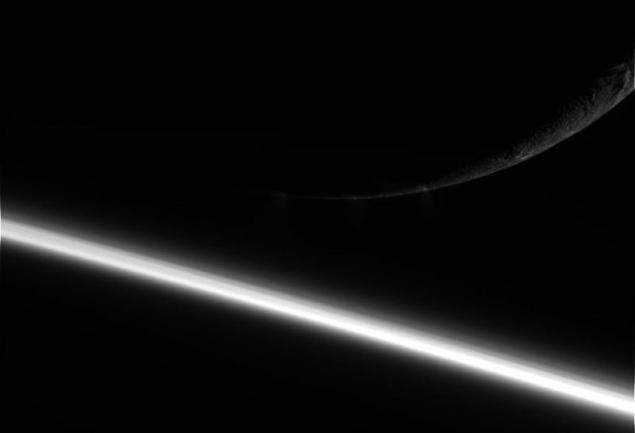
Sunlight illuminates the deep cut canyon Ithaca 1000 km length of 2 of June. (NASA / JPL / Space Science Institute)
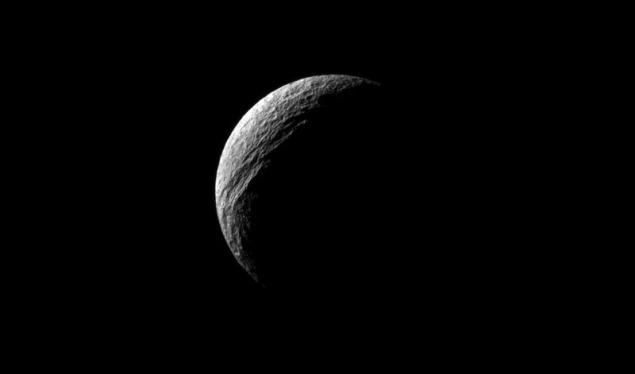
"Cassini" made its best at this point a detailed picture of Saturn's moon Daphnis, approaching him 75 000 km 5th of July. (NASA / JPL / Space Science Institute)
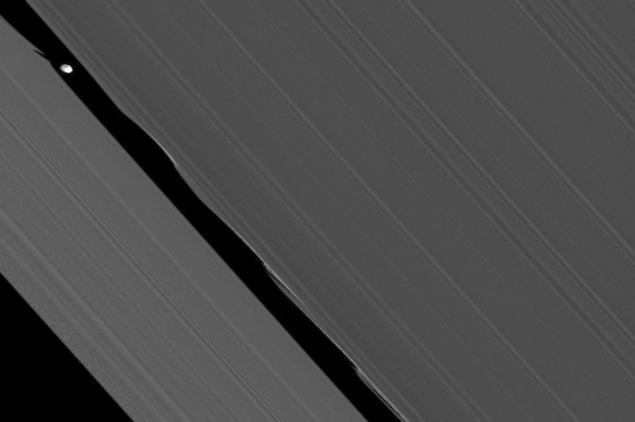
Saturn's moon Rhea (1,528 kilometers) slightly illuminated the planet with a wide shadow cast by the rings of Saturn, May 8. (NASA / JPL / Space Science Institute)

The surface of Saturn's moon Dione on the background of foggy ghostly Titan on April 10. The picture was taken apparatus "Cassini" at a distance of about 1, 8 million kilometers from Dione and 2? Million kilometers from Titan. (NASA / JPL / Space Science Institute)

Enceladus is spewing out water ice from its south polar region. Also in the picture you can see the ring G. (NASA / JPL / Space Science Institute)
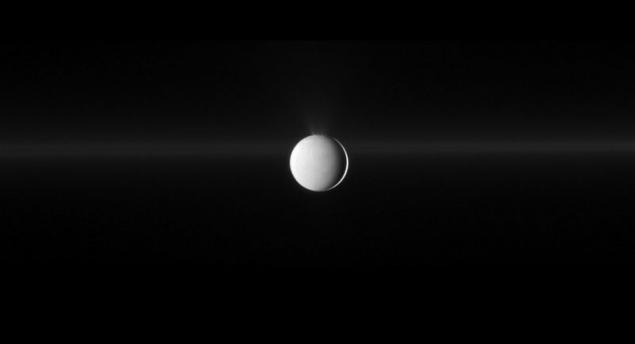
"Cassini" managed to make a detailed view of the surface of Saturn's moon Enceladus on August 13. (NASA / JPL / Space Science Institute)
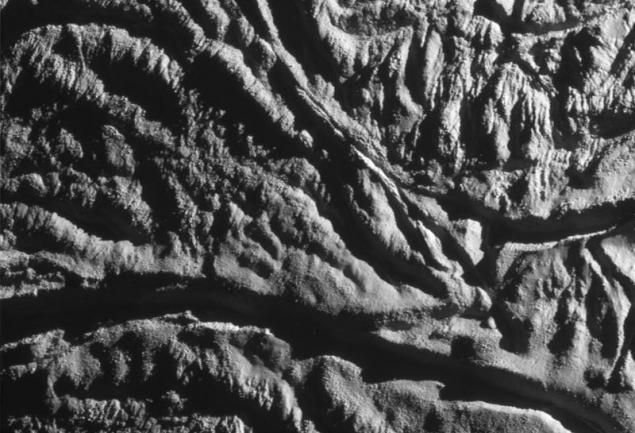
30-frame sequence shows us approach "Cassini" to the icy jets on Enceladus on August 13. (NASA / JPL / Space Science Institute)
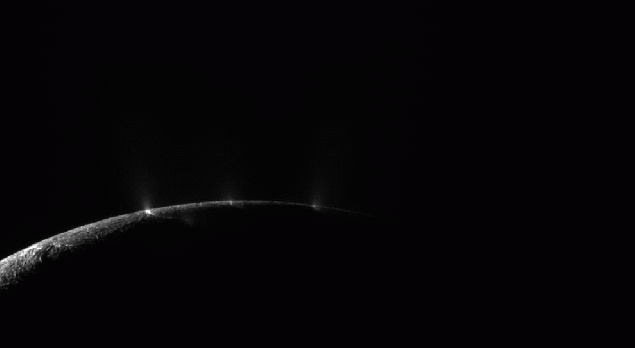
via Source
September 8, 2010 in the sun erupted class C3. When sunspot turns away from the Earth, the active region erupted, producing a solar flare and a fantastic bulge. The flash also produced coronary mass ejection into space.

Relief on the surface of Mercury, including craters Kipling (bottom left) and Steichen (upper right). The picture was taken on September 29 spacecraft NASA «MESSENGER». (NASA / Johns Hopkins University Applied Physics Laboratory / Carnegie Institution of Washington)

Earth and Moon from afar May 6, 2010 at a distance of 183 million kilometers from the ship «MESSENGER», from which the picture was taken. North bottom of the image. (NASA / Johns Hopkins University Applied Physics Laboratory / Carnegie Institution of Washington)

Disappearing crescent and a thin line of Earth's atmosphere. Picture taken by a crew member «Expedition 24" on the International Space Station on Sept. 4. (NASA)

Earth - the view from the Moon on 12 June. This image was created by a team of orbital station «Lunar Reconnaissance Orbiter» of several photos taken on 12 June during the sequence settings. (NASA / GSFC / Arizona State University)

Brightly lit areas of Torino (Italy), Lyon (France) and Marseille (France) stand out from the small towns. Picture taken on April 28. (NASA / JSC)

Aurora australis over the Earth on May 29. (NASA / JSC)

Meteor rushes past stars in the night sky over Stonehenge in England on 12 August. Perseids occur every August when the Earth passes through a stream of space debris left by comet Swift-Tuttle. Picture taken with a long exposure. (REUTERS / Kieran Doherty)

Mertz glacier floats off the coast of East Antarctica along the coast of George V on 10 January. Apparatus ALI satellite EO-1 took this picture of the iceberg in a natural color, separated from the glacier. (NASA Earth Observatory / Jesse Allen / NASA EO-1 team)

Photo taken by astronaut Douglas H. Wheelock aboard the International Space Station on August 22. "The beauty of Italy a clear summer night in the arms of the Mediterranean Sea. You can see many beautifully illuminated islands and shoreline, including Capri, Sicily and Malta. Along the coast stand out Naples and Mount Vesuvius. " (NASA / Douglas H. Wheelock)

Hurricane Danielle. Taken by astronaut Douglas H. Wheelock aboard the International Space Station on August 28 low orbit. (NASA / Douglas H. Wheelock)

Pit on the Moon. Picture taken on 24 April and reaches about 400 meters wide. (NASA / GSFC / Arizona State University)

The last rays of the sun illuminate the central peak of the crater on the Moon Bhabha before sunset. Picture taken July 17. (NASA / GSFC / Arizina State University)

LROC station photographed natural bridge on the moon. How did this bridge? Most likely because of the double collapse in lava tubes. " Picture taken in November 2009. (NASA / GSFC / Arizona State University)

This photo Martian satellite Phobos was made using a high-resolution stereo camera on board the ship «Mars Express» March 7. (ESA)

One dune on the surface of Mars. The photo was taken at 14:11 local time on July 9 Mars. (NASA / JPL / University of Arizona)

Inflated by the wind on the surface of the relief shield volcano in the region Tharsis on Mars. Picture taken July 31. (NASA / JPL / University of Arizona)

Dunes in the crater of Matara on Mars on 24 July. (NASA / JPL / University of Arizona)

Rover «Opportunity» «looks" on their tracks on the Martian surface on August 4. (NASA / JPL)

Rover «Opportunity» directed its panoramic camera on the ground, taking the shot himself and his tracks, June 23. (NASA / JPL)

Rover «Opportunity» photographed part of the stone from which he took a sample of the top layer for consideration on 7 January. (NASA / JPL)

Rover «Opportunity» uses its microscopic camera for a more detailed picture of stone on the surface of Mars on February 17th. (NASA / JPL)

Asteroid Lutetia. Picture taken spacecraft "Rosetta" on July 10. The European Space Agency has been able to get close to the asteroid at a minimum distance during his travels 476 million miles between Mars and Jupiter. "Rosetta" took the first pictures from the largest asteroid, which has ever been a satellite, July 10, 2010, flying at near distance away (3200 km). (AP Photo / ESA)

Bright dot on each of these images is a small comet or asteroid burning in the atmosphere. Photo on the left was made on June 3 amateur astronomer Anthony Weasley in Broken Hill, Avtsraliya. He took this picture using the 37-cm telescope. The picture shows color Weasley teams. Meteor is visible on the right. Color image on the right was made by an amateur astronomer Masayuki Tachikawa of Japan on August 20. Meteor can also be seen at the top right. (REUTERS / NASA)

Saturn and its moon Enceladus. Picture taken spacecraft "Cassini" on August 13. (NASA / JPL / Space Science Institute)

Sunlight illuminates the deep cut canyon Ithaca 1000 km length of 2 of June. (NASA / JPL / Space Science Institute)

"Cassini" made its best at this point a detailed picture of Saturn's moon Daphnis, approaching him 75 000 km 5th of July. (NASA / JPL / Space Science Institute)

Saturn's moon Rhea (1,528 kilometers) slightly illuminated the planet with a wide shadow cast by the rings of Saturn, May 8. (NASA / JPL / Space Science Institute)

The surface of Saturn's moon Dione on the background of foggy ghostly Titan on April 10. The picture was taken apparatus "Cassini" at a distance of about 1, 8 million kilometers from Dione and 2? Million kilometers from Titan. (NASA / JPL / Space Science Institute)

Enceladus is spewing out water ice from its south polar region. Also in the picture you can see the ring G. (NASA / JPL / Space Science Institute)

"Cassini" managed to make a detailed view of the surface of Saturn's moon Enceladus on August 13. (NASA / JPL / Space Science Institute)

30-frame sequence shows us approach "Cassini" to the icy jets on Enceladus on August 13. (NASA / JPL / Space Science Institute)

via Source
Tags
See also
The spacecraft "Orion" is ready to test launch into orbit
Types of megacities from the satellite. 5 photos
Spacecraft in the solar system: Venus to Pluto (video NASA)
May 20 in the space launch vehicle with a solar sail
Spacecraft Maven successfully arrived in orbit of Mars
Travel around the solar system
NASA unveiled a prototype system for origami photocells spacecraft
Difficult road to Mars
NASA is not sure that the Voyager left the solar system
Year in space with an unknown purpose: Shuttle successor, top-secret spacecraft X-37B
















